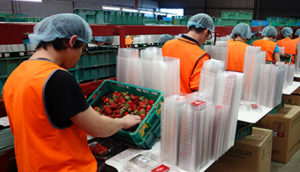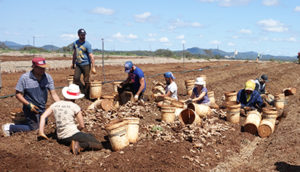Read the latest information on
Foot-and-mouth disease
 At this time of year, many fruit or veg producers will have casual labourers, often backpackers, on their property to help with harvesting activities.
At this time of year, many fruit or veg producers will have casual labourers, often backpackers, on their property to help with harvesting activities.
If care is not taken, labourers can spread diseases, pests and weed seeds on their clothing, equipment and vehicles as they move from farm-to-farm and region-to-region.
But armed with the necessary information, your hired help can be an important part of the solution for maintaining good biosecurity on your farm.
Stuart Kearns, Manager for Farm Biosecurity Programs at Plant Health Australia, says that biosecurity signs are a good way to alert people to your requirements and of the potential risk that their visit poses to your business.
“From the minute newcomers enter your farm they will know you take biosecurity seriously,” said Stuart.
Parking restrictions will limit any problems posed by their vehicles. Ask workers to stay on formed roads or laneways wherever possible to limit the spread of pests and weeds.
“Before they start work, ask them to sign a visitor register, and record information like where they have come from and where they plan to go when they leave your property.”

Seasonal workers who have contact with your production areas are a clear biosecurity threat.
“Workers who have recently been overseas may be a particularly high biosecurity threat, especially if they have visited crops, farms, orchards or markets where plant material was sold.”
Another threat is when labourers work with or harvest the same crop as the season progresses down the country, moving from one growing area to another. This is a perfect opportunity to spread pests.
“All workers will need to be very aware of your biosecurity needs. Once your workers have signed your visitor register, this is an ideal opportunity to take your new staff through a biosecurity checklist,” advises Stuart.
The ‘come clean: go clean’ is a key concept for your labourers to keep in mind, whether you are referring to:
Going clean is another important biosecurity consideration at harvest time, especially when your produce is leaving the property. Wash and disinfect harvest bins and equipment and ensure there is no leaf litter present when produce leaves the property.
“Finally, take the time to make your workers familiar with the signs of common pests and diseases and know how to report anything unusual. Let them know how important reporting is to be able to respond quickly to a potential problem,” said Stuart.